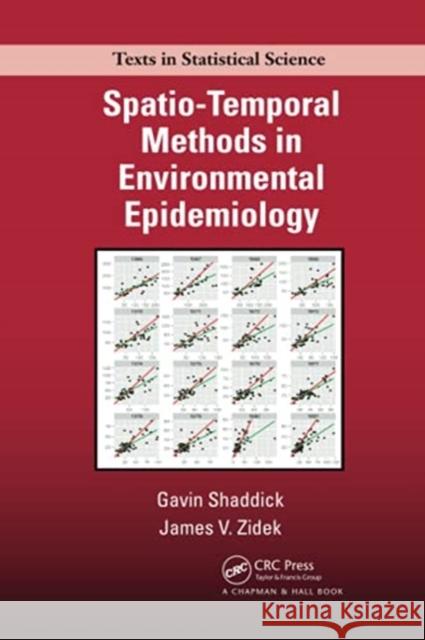Spatio-Temporal Methods in Environmental Epidemiology » książka
Spatio-Temporal Methods in Environmental Epidemiology
ISBN-13: 9780367783464 / Angielski / Miękka / 2021 / 395 str.
Spatio-Temporal Methods in Environmental Epidemiology
ISBN-13: 9780367783464 / Angielski / Miękka / 2021 / 395 str.
(netto: 198,69 VAT: 5%)
Najniższa cena z 30 dni: 201,44 zł
ok. 16-18 dni roboczych.
Darmowa dostawa!
Teaches Students How to Perform Spatio-Temporal Analyses within Epidemiological StudiesSpatio-Temporal Methods in Environmental Epidemiology is the first book of its kind to specifically address the interface between environmental epidemiology and spatio-temporal modeling. In response to the growing need for collaboration between statisticians and environmental epidemiologists, the book links recent developments in spatio-temporal methodology with epidemiological applications. Drawing on real-life problems, it provides the necessary tools to exploit advances in methodology when assessing the health risks associated with environmental hazards. The book’s clear guidelines enable the implementation of the methodology and estimation of risks in practice.Designed for graduate students in both epidemiology and statistics, the text covers a wide range of topics, from an introduction to epidemiological principles and the foundations of spatio-temporal modeling to new research directions. It describes traditional and Bayesian approaches and presents the theory of spatial, temporal, and spatio-temporal modeling in the context of its application to environmental epidemiology. The text includes practical examples together with embedded R code, details of specific R packages, and the use of other software, such as WinBUGS/OpenBUGS and integrated nested Laplace approximations (INLA). A supplementary website provides additional code, data, examples, exercises, lab projects, and more.Representing a major new direction in environmental epidemiology, this book—in full color throughout—underscores the increasing need to consider dependencies in both space and time when modeling epidemiological data. Students will learn how to identify and model patterns in spatio-temporal data as well as exploit dependencies over space and time to reduce bias and inefficiency.











